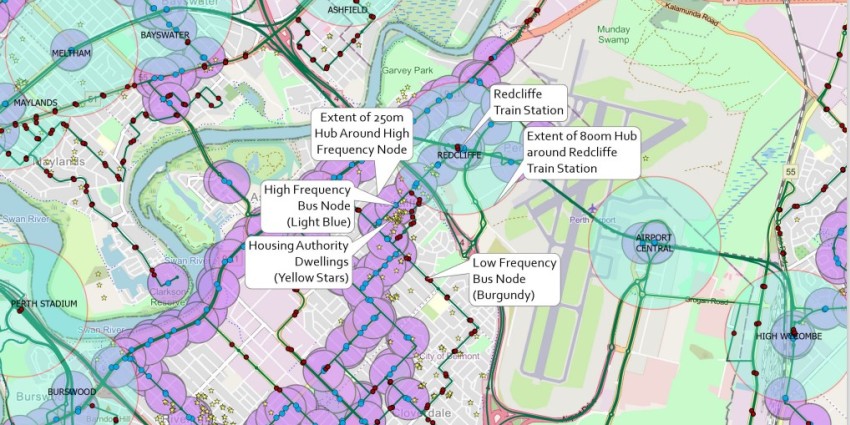
By plotting the flow and frequency of public transport across the state, the High Frequency Hub system enables Communities to identify the transport needs of properties earmarked for acquisition as well as responding to those needs when planning new social housing.
The system has been developed by David Szabo in Housing and Homelessness with input from members of the Urban Planning Design and Approvals team (UPDA) and data from the Public Transport Authority.
David, who is a Development Manager for the North-West Aboriginal Housing Fund (NWAHF) has a background in urban and regional planning and describes himself as a 'GIS nerd'. Until the development of this system, high-frequency transport nodes and hubs near properties had to be manually identified with the use of bus and train schedules alongside Google Maps.
"I couldn't believe there wasn't an easier way to find this information or that such a system hadn't been developed within Government, so I created one." David said.
The system operates by tracking the bus and train flow at individual stops throughout Western Australia, particularly in the Perth and Peel regions.
"An understanding of high transport routes allows us to pinpoint areas suitable for higher density development and ensure we deliver appropriate housing with ready access to public transport. This has significant value across government, as well as for developers and the public."
David credits the success of the project to relationships and collaboration across Government. "NWAHF's involvement in the High Frequency Hubs system highlights our approach to addressing challenges through leveraging diverse skill sets across teams."
The system aligns with the State Government's Housing Diversity Pipeline as well as upcoming improvements to the Residential Planning Codes, both of which aim to improve the supply, quality, diversity and accessibility of housing in Western Australia, especially through the development of more innovative and creative ideas.


